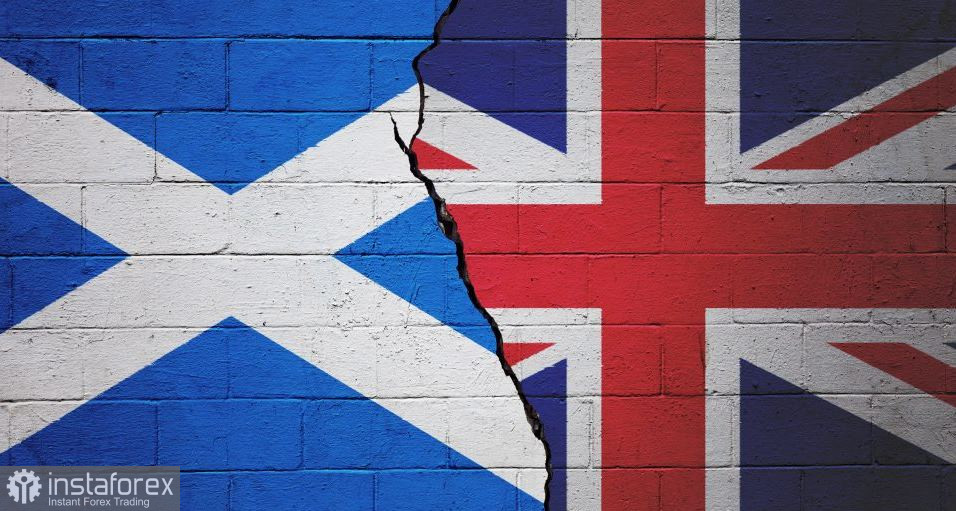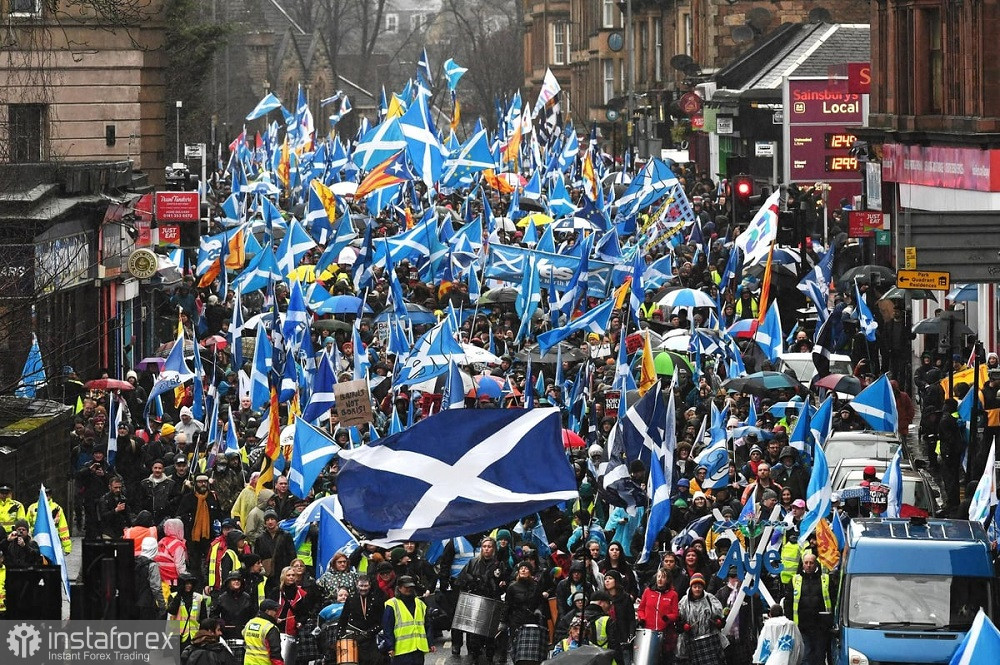The GBP/USD pair tested the 21st figure on Thursday - for the first time since the beginning of August. This is mainly due to the dollar getting weaker, as it stopped moving upward across the market. U.S. trading floors were closed yesterday (Thanksgiving Day in America), and the minutes of the November FOMC meeting, published the day before, were interpreted against the dollar. Such a fundamental background made it possible for GBP/USD bulls to hit a new multi-month high, marking 1.2152.
Take note that the bulls were getting closer to the area of 20 figures during the last two weeks. After almost a week-long flat in the range of 1.1800-1.1950, the bulls decided to make a swift upward move, which enabled them not only to cross the level of 1.2000, but to also probe the area of the 21st figure. Do remember that the pound's growth was caused not only by the dollar getting weaker, but because it also had political overtones.

The fact is that this week the British Supreme Court rejected the Scottish referendum bid for independence. According to the court's verdict, the Scottish government cannot initiate a second referendum without the UK Parliament's approval.
In other words, the Supreme Court put an end to a long-playing story that has emerged (making GBP/USD traders nervous) and then disappeared into oblivion. Therefore, this court ruling is strategically important for the British currency. The pound got rid of a threat that had been hanging over it for several years, threatening to collapse. After all, if the Supreme Court verdict had been the opposite, next year the UK could have experienced events comparable to those of 2016, when the historic referendum on Brexit was held.
As mentioned, the so-called "Scottish issue" has been hyped from time to time in the global press, going beyond local discussions in the local media. The last time this topic was actively discussed was at the end of last year, when the problems associated with the Coronavirus receded into the background. Back in September 2021, Scottish Prime Minister Nicola Sturgeon confirmed at the Scottish National Party conference that she was planning to hold a second independence referendum before the end of 2023. She stressed that these plans, put on pause because of the pandemic, are "unchanged."
Recall that in the 2014 Scottish independence referendum, 45% of those who voted "for" and 55% voted "against." That is, the majority voted for union with Great Britain. This plebiscite was held two years before another - historic - referendum, where the majority of British residents (though by a slim margin) voted for secession from the European Union. The Scots, in turn, were unequivocal: nearly 70% of the region's population voted against Brexit. After that "separatist" sentiments intensified in the region. According to experts, Scotland is now essentially divided 50/50 on independence. But analysts don't rule out a possibility that many politically neutral residents of Scotland can mobilize if necessary and use the chance that fell out. After all, it would obviously present itself to them next time in several decades. That is why sociologists have repeatedly warned that at the "X hour", when hypothetical plans for a new referendum take shape, the scales will tip in favor of the region's independence.
But to the disappointment of supporters of Scottish independence, the Supreme Court did not allow the local authorities to organize a second vote without an approval from the British Parliament.
Downing Street has already rushed to say that the Cabinet will not allow another plebiscite. According to the government, this is a "once in a generation" event. It is obvious that the Conservatives, who control the House of Commons (and will control it at least until 2024) will not allow the Scottish nationalists to realize the idea of another referendum. Therefore, this issue can be considered closed: for the foreseeable future, all slogans and calls for Scottish independence will have no effect on the pair.

However, despite the importance and significance of the Supreme Court ruling, the pair's fate now depends on the dollar's behavior. The "Scottish issue" usually flares up brightly, but fades quickly. And it looks like this time it will fade today and for a long time. Next week traders of dollar pairs will focus on the Federal Reserve representatives' rhetoric. The market's tumultuous reaction to the minutes of the November FOMC meeting suggests that the dollar continues to "rule" the currency pairs of the major group. Traders in the second round played back the news that the U.S. central bank will slow down the pace of monetary policy tightening as early as December. But at the same time, the question of what level of the rate the central bank will stop at in the current cycle is still a matter of debate. And this discussion, the degree of "hawkishness" of which will be determined by members of the Fed, will allow GBP/USD traders to determine the vector of price movement.
In my opinion, the Fed's minutes will fade into the background at the beginning of next week (Fed representatives have already announced all the theses of this document). The focus will be on U.S. statistics (Nonfarm) and comments of the Fed members. If they reiterate that it is not the speed of rate hikes that matters but the end of the current cycle, then the dollar may come out on top again. The probability of this scenario is quite high, given the earlier statements of Fed Chairman Jerome Powell and many of his hawkish wing colleagues.
Bulls on GBP/USD, who are taking advantage of the moment (shortened trading session on Friday, low liquidity), may try to cross the resistance level of 1.2150 (the upper line of the Bollinger Bands on the D1 timeframe) again. However, taking into account the current fundamental background, it is better to wait for the upward momentum to end, and by next week, you should consider short positions with the first target being 1.1940 (the Tenkan-sen line on D1) and the main target at 1.1700 (the middle line of Bollinger Bands on the same timeframe).
 English
English 
 Русский
Русский Bahasa Indonesia
Bahasa Indonesia Bahasa Malay
Bahasa Malay ไทย
ไทย Español
Español Deutsch
Deutsch Български
Български Français
Français Tiếng Việt
Tiếng Việt 中文
中文 বাংলা
বাংলা हिन्दी
हिन्दी Čeština
Čeština Українська
Українська Română
Română

